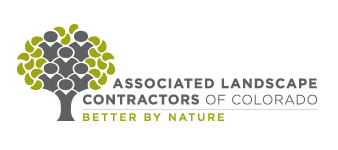| Debt: from four-letter word to growth strategy |
 |
| Written by Colorado Green NOW |
| Wednesday, December 09, 2020 03:00 AM |
|
You are on the verge of signing a landscape contract with a new client—one with plenty of potential for future growth. Then the unthinkable happens: one of your company vehicles breaks down. There goes the cash you had earmarked for hiring new team members or the cash reserve you saved to avoid layoffs should the economy do the unexpected. Many small businesses are hurting due to the COVID-19 pandemic. A recent survey by Green Industry Pros found that COVID-19 has delayed some capital for more than 60% of respondents. Naturally, many landscape businesses are keeping a close eye on margins and cash flow: holding onto cash reserves, avoiding debt, and fighting for new business. But how can you ensure that your business survives and thrives without reliable equipment? Believe it or not, the answer might be debt. Leveraging debt via leasing can help you get the vehicles you need while protecting your liquid assets like cash for business growth—even during a pandemic. Good versus bad debt He points out that uncertainty in the economy can cause landscape business owners to pause plans to upgrade and develop their fleets. But outdated vehicles are less efficient; they get poorer gas mileage, break down more frequently, and cost more to repair. Vehicle repairs by nature are unpredictable so they eat into your cash reserves, but will you have cash on hand when the repair is needed? Borrowing from banks might solve the problem in the short term, but the cycle begins anew as equipment continues to age and depreciate. Leasing as a growth strategy “Leveraging debt is a common growth strategy, so long as the debt is expected to generate more income than it costs,” notes Brooke Martellaro, CPA, and principal at Springboard Ventures. Leasing vehicles, equipment, or other assets that produce revenue or increase your profit margin enables you to invest the cash you are holding in your company into other areas—such as buying materials at a discount. Plus, leasing has other benefits. The total lease cost is categorized as a business expense, which reduces your income tax liability. By comparison, only the interest portion of a bank loan can be deducted. In addition, to that, the asset’s depreciation can also be de-ducted from state and federal income taxes, so long as the vehicle is used for business purposes at least 50% of the time. In some cases, this tax deduction can be taken entirely in the first year of the financing agreement. “Cash will remain king for a long time,” says Spitz. Instead of using it to buy vehicles or equipment that will eventually need replacement, dedicate your cash to growing sales, or preventing a cash crunch while waiting for client payments. “Let’s say you need two new trucks this year—that might cost about $65,000,” says Jonathon. “Would you rather use that money on trucks or on hiring a salesperson?” How to make leasing work for your business “Think of your vehicles like tools,” Spitz says. “Use them when they’re reliable and when operational costs are predictable; otherwise, sell and replace them. Always consider your business projections—and whether spending your cash reserves on vehicles is the best way to use it.” “Using a lease finance structure to maintain an updated fleet is a wise decision for businesses that want to support growth but need to retain liquid capital. When you consider the opportunity cost of investing your cash into your business—paying cash for a vehicle is often the most expensive way to acquire one.” Lee Spitz is the founder of Alliance Leasing. He has been serving the Colorado contracting community for over 20 years. He has a wealth of experience helping businesses grow by providing financing strategies that enable companies to use their cash to grow while maintaining a dependable and reliable fleet of vehicles. Visit alliance-leasing.com. [This article originally appeared in the November/December issue of Colorado Green.] Read more in this issue of Colorado Green NOW: |


